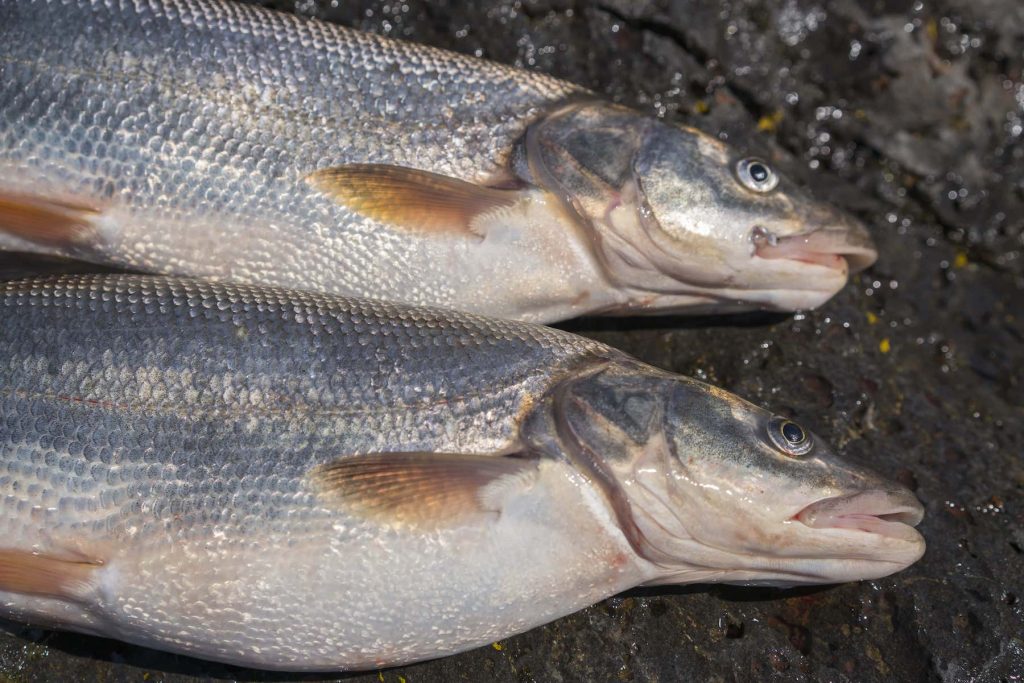
‘Tough Season, Weird Year’ For Pikeminnow Anglers; Participation Tweaks Mulled For 2021 Reward Fishery
“Tough season, weird year.”
That is Eric Winther’s quick take on the northern pikeminnow sport-reward fishery that wrapped up on the Columbia and Snake Rivers earlier this month.

Like most everything in 2020, the federally funded program that pays anglers to remove the predatory native species faced a lot of adversity.
But while catch and effort were among the lowest seen over its three decades run so far, the aim to remove enough 9-plus-inch pikeminnows from the system to reduce their overall consumption of outmigrating salmon and steelhead was met yet again.

“We did achieve our 10 to 20 percent exploitation goal for the 28th time out of 30 seasons,” noted Winther, who manages the program for WDFW. “The end-of-season extension and increased rewards really helped boost effort and harvest for the last two weeks of the 2020 season, helped many pikeminnow anglers end this weird year on a high note.”

In mid-September, it was announced that for the rest of the season all fish would be worth $10 – up from $5 to $8 – specially tagged ones could be redeemed for $1,000 instead of $500, and that 11 of the busiest stations would remain open through Oct. 11.
Only a handful of tagged fish came in during the final three weeks, but anglers did register 3,805, 3,610 and 2,690 fish over that same timeframe, worth just over $101,000.
A total of 103,114 pikeminnows were brought in over the course of the five-month fishery, which also began 10 days later than usual after Washington Governor Inslee’s Stay Home, Stay Healthy order saw WDFW close fishing (and hunting) for six weeks into early May.
“The late start due to Covid really put us in a hole,” reported Winther. “River conditions and catch were pretty good when we finally got started on May 11th, then spring runoff started and harvest slowed.”
“We never really got great fishing conditions after that, even during the traditional peak in June either. Effort was down, which I totally understand with Covid, but then fishing was just OK for those that did get out and fish,” he added.
Effort was a shade under 16,000, which is the fewest since the program began in 1991 and more than 3,500 less than the next closest year, 2014’s 19,508.
The top angler earned $48,401 by bringing in 5,579 fish, including four tags. That’s the lowest high mark since 2007 and less than half of 2016’s record-earning haul of $119,341 for 14,019 fish and 12 tags.
Funding comes from the Bonneville Power Administration, which operates numerous dams on the Columbia system and is required to mitigate their impact on salmon and steelhead.
Over the course of the season anglers brought in an average of 6.5 pikeminnows, which is lower than most recent years but on par with several seasons a decade ago.
The highest weekly catch was 7,250 in late June and early July, while the highest average per angler was 10.5 in early September.
Participation slid throughout the season, from 1,495 the first week to a low of 398 in mid-September before bouncing back somewhat for the last weeks.
Two stations at opposite ends of the program waters saw the most fish turned in, 18,901 at Boyer Park on the Snake below Lower Granite Dam and 15,227 at Cathlamet on the Lower Columbia. The latter had unexpectedly been the top spot the previous two years.
While the program targets pikeminnows – the “primary” predator of young Chinook, coho, A- and B-runs and other ocean-going salmonid stocks in the reservoirs of the Columbia and Snake and their tailwaters – participants do incidentally catch other species. This year they reported 7,337 smallmouth bass, 3,223 yellow perch, 2,173 catfish of various types and 866 walleye.
“Good news is that despite lower effort and harvest, I’m optimistic that 2021 will be better and we are looking at options for making participation easier, especially early in the season before runoff,” Winther said.
That caught my ear and I asked him to explain further.
“We are looking at adjusting station locations and times, reviewing registration requirements given the Covid effect and hoping to even make some move towards some kind of online/electronic registration, if possible. We want to put everything on the table as we strive to maintain or increase effort and harvest,” he said. “Stay tuned.”
You can be sure of that!
For more details on the program, as well as hot spots, info on best lures and baits, catch by station and year, annual reports and more, see pikeminnow.org.
